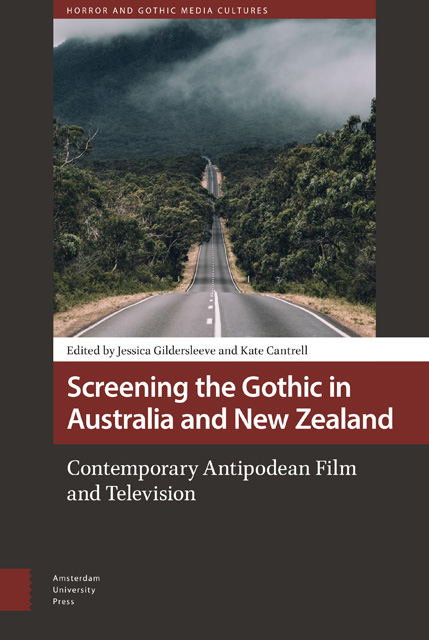8 - At the End of the World : Animals, Extinction, and Death in Australian Twenty-First-Century Ecogothic Cinema
Published online by Cambridge University Press: 24 November 2022
Summary
Abstract
Australian twenty-f irst-century Ecogothic cinema often explores ecocritical concerns of animal and human extinction within global hypercapitalism. The Hunter (2011) and The Rover (2014) offer different perspectives on these concerns through their representations of animals, death, space, and place. The Hunter relates the story of a man sent to hunt the only remaining Thylacine, or Tasmanian Tiger, on behalf of a nefarious multinational corporation. In more allegorical mode, The Rover is structured around the protagonist's recovery of his car from a highway gang in order to bury his pet dog. The Ecogothic has, to date, largely been approached through literary rather than cinematic examples, and this chapter redresses this imbalance.
Keywords: Ecogothic; ecocriticism; animals; extinction; Australian Gothic cinema; hypercapitalism
Ecogothic cinema might be approached in many ways. One could pay attention, for example, to changes of place, like deforestation or beach erosion caused by rising sea levels, or to weather extremes resulting from climate change, such as heatwaves or torrential rainfall. This chapter traces an ecogothic pathway through two contemporary Australian films, The Hunter (2011) and The Rover (2014), through a consideration of the representation of animals in both films. Given that Catherine Simpson has lamented that ‘despite the preponderance of animals in Australian cinema, little work has been done on their role or function’ (44), this chapter attends to the representations of animals in The Hunter and The Rover to enable a broader engagement with death and extinction in Australian twenty-first-century ecogothic cinema.
Animals as a Portent of Death and Extinction in The Hunter and The Rover
The current increase in global awareness of ‘green’ concerns, such as climate change, environmental catastrophe, and urban and non-urban habitability is likely to raise the profile of animals in cinema studies. The Hunter and The Rover tender different perspectives on animals themselves and on the always already troubled distinction between ‘non-human animals’ and ‘human animals’ in the face of environmental and social collapse. Rather than offering an exhaustive textual analysis, this chapter engages with The Hunter and The Rover through a number of thematic lenses in order to contribute to the scholarship around Australian ecogothic cinema.
- Type
- Chapter
- Information
- Screening the Gothic in Australia and New ZealandContemporary Antipodean Film and Television, pp. 159 - 176Publisher: Amsterdam University PressPrint publication year: 2022



